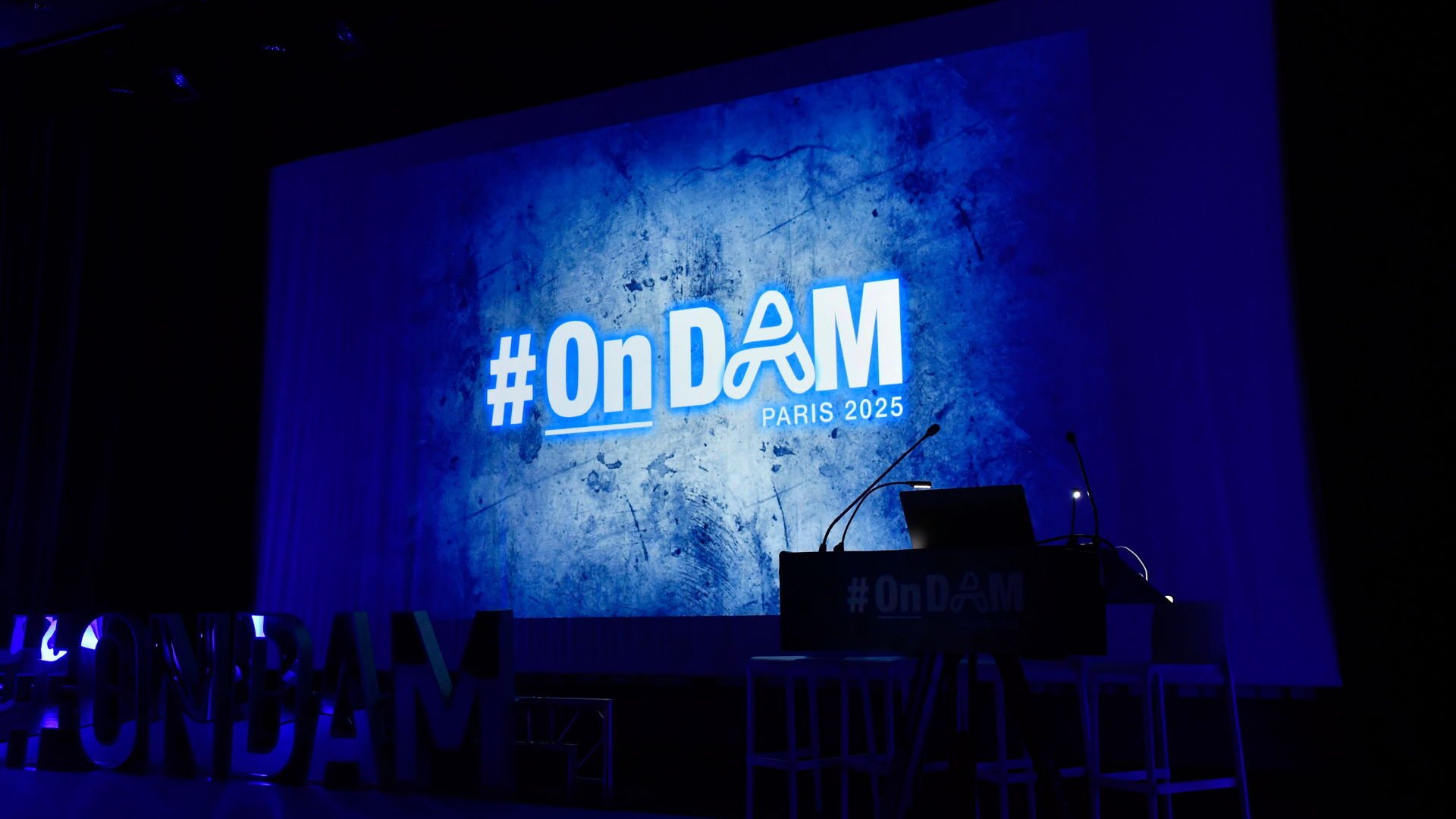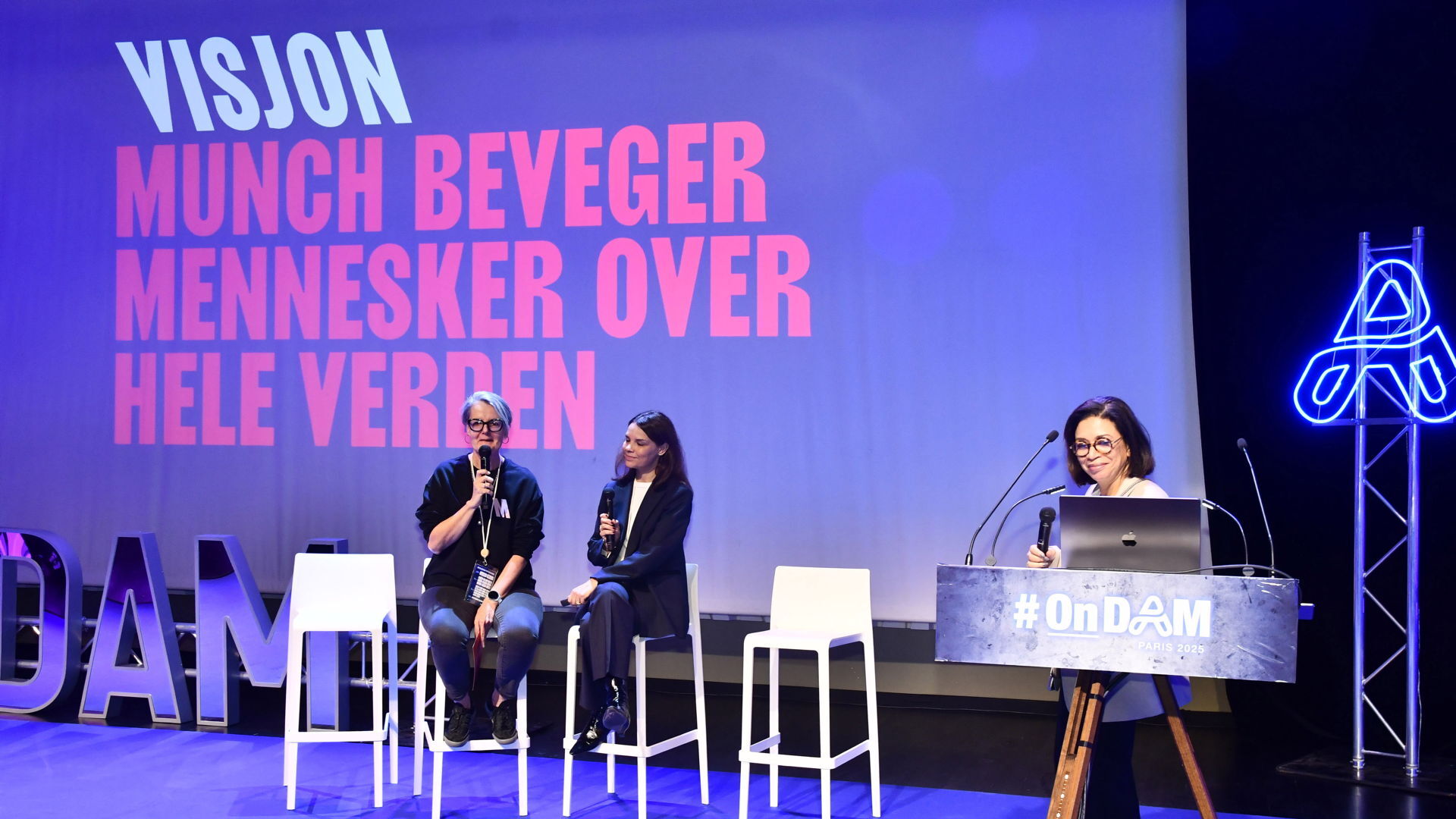
Key takeaways from OnDAM 2025
Last week, we took part in OnDAM 2025, an educational conference fully dedicated to DAM, hosted by Activo Consulting. The two days were filled with sessions on the latest trends and challenges for modern enterprises. Here are some of my key takeaways from this year’s OnDAM event.

AI as a human endeavor
As we started the conference watching the new Pepsi Ad, entirely created by AI, one can wonder: when it comes to AI, are we still in that romantic phase when you encounter something new and feel a mix of excitement and fear?
Not really.
Although AI agents are emerging in all kinds of solutions, we are aware that they are just configurable assistants at the service of humans: GDPR and compliance agents, cyber security agents, brand consistency agents, etc. Good AI tools don’t replace creativity, they feed it. They don’t replace inspiration, even when they try.
Today’s companies will not hire an AI instead of a human. Rather, they will look for people who know how to use AI to be more effective. The question is, therefore, no longer what AI can do, but why we are using it and how we can benefit from it.
In the DAM word, AI is all about optimization. For example, during indexation of new content items, there’s potential to combine auto-tagging capabilities with trained AI modules who understand your vocabulary, routines and brand.
It can also mean providing an open solution able to communicate with external AI-tools that respond to specific inquiries, whether it is identifying – and tagging – a specific football player or assisting marketing teams in generating new content items.
READ MORE: How to streamline sports photography with AI and metadata — an example

The importance of governance
During the conference, we heard about composable AI and LMM models. This is, of course, very exciting. However, AI runs the risk of creating more chaos by increasing the volume of content with less people available to manage it.
This is where governance comes in, and important questions need to be explored in more detail: who defines the processes; how far we can go; how do we navigate rules and regulations, and so on.
READ MORE: 5 reasons your content operations need a DAM system
With this in mind, it seems essential to adopt a multi-layered approach to maintain good AI governance. We’ve heard several organizations discuss the need for cross-functional AI-committees who are accountable for defining those rules and make sure everyone is applying them.
Because in a world shaped by technology, it’s crucial to bear in mind that you can’t leverage AI without good data sources to support it. And at the end of the day, who are the responsible actors behind such data? Humans.
READ MORE: The today and tomorrow of DAM


Trust and authenticity at the core of content creation
Without trust there will be no future for content creation and distribution.
In the era of Gen AI, fake news and geopolitical uncertainty, the question of trust arises in every business. For DAMs, this means trusting the content, its provenance, its authenticity and our rights to use it as a person or as an organization.
READ MORE: The crisis of trust in digital content: GenAI and Content Authenticity
This challenge doesn’t just concern the newspapers or publishing houses, as trust and authenticity are at the core of every enterprise’s digital transformation journey.
Laws are being voted as we speak in California to make sure that every website with more than 2 million visitors, which includes social media channels, is only publishing content with metadata indicating its provenance.
Organizations such as The Coalition for Content Provenance and Authenticity (C2PA) have been discussing this for years, but today the technology is finally catching up, offering some concrete measures: whether it is for a camera-maker to implement content credentials as a framework; vendors to implement it in their DAM; or social media and other web applications making such credentials trackable after publication. The options are many and should be of great interest for any modern organization.
READ MORE: Content verification: A project for photo authenticity in journalism

DAM governance as a key to success
There are many levels of DAM governance from leadership, content creators, DAM managers, IT teams and actual users. It doesn’t matter how extensive your solution is, the only way it would generate true value is when it’s widely used across teams.
So how do you make sure to guarantee good user adoption while maintaining consistency?
At OnDAM, we heard some organizations are actually building their own DAM communities – or “DAM champions”. Sometimes, these organizations are making users responsible by delegating them ownership of selected digital assets.
DAM governance is like all other business strategies: it’s about empowering people by holding them accountable.
READ MORE: The complete guide to Digital Asset Management
The challenge with ROI
As DAM vendors, measuring Return on Investment (ROI) has always been about creating value. However, value can be measured in so many ways: compliance; risk minimization; brand visibility and consistency; actual revenue as in number of clicks or sales; or even numbers of digital or physical visitors.
In the DAM business, value can be difficult to measure, especially when it’s related to saving time or allowing for greater repurposing of existing content. Task by task, workflow by workflow, asset by asset.
Ensuring that the customer achieves true value from their DAM solution is a constant balancing act: while AI and custom automations can do a lot to enhance one’s workflows, it shouldn’t always be invested in if other people in the organization are using similar tools already, or if it’s not tailored enough to solve the real challenges the organization’s facing.
That is where DAM vendors are playing a particularly important role: we need to assist our customers in finding those low hanging fruits, the small adjustments that could be done and the tasks that can easily be automated, allowing them to spend their time on what really matters.
READ MORE: How Time Out transforms publishing workflows with Fotoware Veloz
And let’s not forget, whatever a company identifies as value, it needs to be monitored through good performance tools over time. Because what works today may not necessarily work tomorrow, and digital success is all about continuous learning and adaptation.

Subscribe to our newsletter
Want to stay updated on news from Fotoware? Subscribe to our newsletter and receive regular updates on DAM trends, success stories, and more.

